
Construction History-International Journal of the Construction History Society
Scope & Guideline
Bridging Historical Insights with Modern Practices
Introduction
Aims and Scopes
- Historical Analysis of Construction Techniques:
The journal emphasizes the examination of various construction techniques across different periods and regions, providing insights into how these methods evolved and impacted the built environment. - Interdisciplinary Approaches:
It encourages interdisciplinary research, combining perspectives from history, engineering, architecture, and sociology to create a comprehensive understanding of construction history. - Socio-Political Contexts:
The journal often explores the socio-political influences on construction practices, examining how cultural, economic, and political factors have shaped the development of construction technologies and methodologies. - Technological Innovations:
A significant focus is placed on the analysis of technological advancements in construction, including the introduction of new materials and construction methods that have transformed the industry. - Regional Studies:
The journal highlights regional studies, showcasing the unique construction practices and architectural styles that have developed in various geographical contexts.
Trending and Emerging
- Impact of Technology on Construction:
There is a growing focus on the impact of advanced technologies, such as artificial lighting and modern materials, on historical construction practices, indicating a trend towards understanding how innovations shape the built environment. - Environmental and Sustainability Considerations:
Themes related to sustainability and environmental impact, such as the use of vacuum concrete and eco-friendly materials, are increasingly prominent, reflecting a broader societal concern for sustainable construction practices. - Global Perspectives on Construction History:
Emerging research is adopting a more global perspective, examining construction practices in diverse geographical contexts, as seen in studies of construction in China, Angola, and Switzerland, highlighting the interconnectedness of historical construction narratives. - Architectural and Engineering Collaboration:
The relationship between architects and builders is gaining attention, showcasing collaborative processes in construction and the historical significance of these partnerships, which is vital for understanding the development of modern architecture. - Cultural and Social Impacts of Construction:
There is an increasing emphasis on the cultural and social implications of construction practices, exploring how construction shapes communities and reflects societal values, as seen in studies of neighborhood life and community architecture.
Declining or Waning
- Traditional Crafts and Techniques:
There seems to be a waning interest in the detailed study of traditional crafts and techniques, possibly overshadowed by the focus on modern technology and innovations in construction. - Exclusively Localized Studies:
Research that focuses solely on localized construction practices without broader contextualization is becoming less common, as there is a shift towards more global and interconnected narratives in construction history. - Historical Preservation Techniques:
The exploration of historical preservation methods and techniques is receiving less attention, potentially due to an increasing focus on contemporary construction challenges and sustainability.
Similar Journals
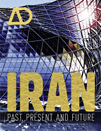
ARCHITECTURAL DESIGN
Exploring the Intersection of Architecture and ArtARCHITECTURAL DESIGN, a leading journal published by Wiley Periodicals, Inc., serves as a vital platform for discourse in the fields of architecture and visual arts. With an ISSN of 0003-8504 and an E-ISSN of 1554-2769, this esteemed publication offers comprehensive insights into contemporary design practices and emerging architectural theories. Established in the United States and continuously evolving from 2002 to 2024, the journal has secured a prominent position with a Q3 status in Architecture and an impressive Q1 ranking in Visual Arts and Performing Arts as of 2023. Its Scopus rankings further affirm its relevance, with a percentile ranking of 82nd in the Visual Arts category. Although it does not currently offer Open Access options, the journal remains dedicated to disseminating high-caliber research and innovative design strategies that engage a diverse readership of researchers, professionals, and students alike. The contributions published within its pages are instrumental in shaping the discourse around architecture, making ARCHITECTURAL DESIGN an indispensable resource for anyone passionate about the built environment.
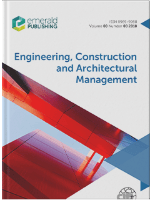
Engineering Construction and Architectural Management
Innovating Practices in Construction ManagementEngineering Construction and Architectural Management is a prestigious journal published by Emerald Group Publishing Ltd, dedicated to advancing knowledge and practice at the intersection of engineering, architecture, and construction management. With an ISSN of 0969-9988 and an E-ISSN of 1365-232X, this journal fosters a scholarly environment for researchers, professionals, and students to explore innovative methodologies and developments within the field. Operating without Open Access, it has maintained a strong reputation since its inception in 1994, with a converged publication timeline extending to 2024. The journal proudly boasts a Q1 ranking in four critical categories for 2023, including Architecture and Building and Construction, highlighting its role as a leading source for groundbreaking research. Additionally, with impressive Scopus Rankings—such as #5 in Architecture (97th percentile) and #28 in Building and Construction (87th percentile)—it underscores its dedication to excellence in scholarly contributions. By addressing key challenges and emerging trends in the industry, Engineering Construction and Architectural Management serves as an essential resource for those striving to shape the future of engineering and architectural practices.
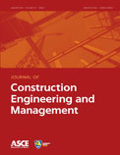
JOURNAL OF CONSTRUCTION ENGINEERING AND MANAGEMENT
Pioneering Research for a Resilient Built EnvironmentJournal of Construction Engineering and Management, published by the American Society of Civil Engineers (ASCE), is a premier scholarly journal dedicated to advancing the field of construction engineering and management. With an ISSN of 0733-9364 and an E-ISSN of 1943-7862, this respected journal boasts a noteworthy impact factor and is categorized in the Q1 quartile across significant fields such as Building and Construction, Civil and Structural Engineering, and Strategy and Management. Covering a broad spectrum of topics relevant to professionals, researchers, and students from its inception in 1982 through 2024, the journal emphasizes innovative research and practical applications that are vital to the construction industry. While it is not an open-access journal, it provides essential insights into the evolving dynamics of construction management, regulatory changes, and technological advancements, making it an indispensable resource for anyone looking to stay at the forefront of their field.

Revista Ingenieria de Construccion
Pioneering Insights in Building and Construction EngineeringRevista Ingenieria de Construccion is a prominent open-access journal dedicated to advancing knowledge and practice in the fields of building and construction engineering, as well as civil and structural engineering. Published by the Pontificia Universidad Católica de Chile, specifically the Department of Engineering and Construction Management, this journal has been providing free access to quality research outputs since 1986, ensuring that vital information is available to both practitioners and academics globally. With its current placement in the Q4 category of both the Building and Construction and Civil and Structural Engineering quartiles, it serves as a platform for innovative studies and critical discussions, positioning itself strategically within the academic landscape. The journal is indexed in Scopus, ranking #157 in Building and Construction and #291 in Civil and Structural Engineering, reflecting the growing impact and relevance of its contributions. Researchers, professionals, and students are encouraged to engage with the rigorous and diverse content published within its pages, fostering a vibrant academic and practical discourse.
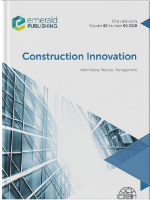
Construction Innovation-England
Driving Research and Innovation in Civil EngineeringConstruction Innovation, published by Emerald Group Publishing Ltd, is a prestigious journal dedicated to advancing knowledge in the fields of architecture, building and construction, civil and structural engineering, and computer science. With an impressive Q1 ranking across multiple categories, it holds a significant position in the academic landscape, alongside a strong Scopus ranking that further highlights its impact in engineering disciplines. The journal, bearing the ISSN 1471-4175 and E-ISSN 1477-0857, serves as a critical platform for researchers, practitioners, and students who seek to explore innovative practices and methodologies in construction. Readers can expect rigorous peer-reviewed articles that address contemporary challenges and spearhead innovations within the industry. Since its inception in 2001, Construction Innovation has established itself as a vital resource for the dissemination of knowledge, fostering collaboration and dialogue among professionals committed to shaping the future of construction and engineering practices.
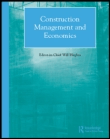
Construction Management and Economics
Bridging theory and practice in construction management.Construction Management and Economics, established in 1983 and published by Routledge Journals, Taylor & Francis Ltd, is a premier academic journal that serves as a vital resource for professionals and researchers in the fields of construction management and economics. With an impressive 2023 impact factor reflected in its Q1 category rankings in Building and Construction, Industrial and Manufacturing Engineering, and Management Information Systems, the journal consistently publishes rigorous and influential research that shapes industry practices and academic thought. Addressing crucial topics from project management to economic evaluations within the construction sector, the journal offers an ideal platform for scholarly discourse and innovative research methodologies. Recognized for its high-quality content, it has established itself as a leading publication with notable Scopus rankings, ensuring that your work will reach a broad, specialized audience. Participants in construction-related fields can greatly benefit from the insights shared within these pages, while the absence of open access further emphasizes the journal's commitment to maintaining an academic standard that facilitates comprehensive peer review.
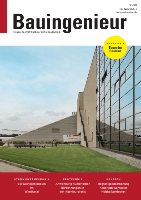
Bauingenieur
Fostering Knowledge for Future Engineering ChallengesBauingenieur, an established journal in the field of Building and Construction and Civil and Structural Engineering, has been a significant platform for scholarly discourse since its inception in 1969. Published by VDI FACHMEDIEN GMBH & CO KG UNTERNEHMEN FACHINFORMATIONEN in Germany, this journal, available in both print (ISSN: 0005-6650) and electronic formats (E-ISSN: 1436-4867), serves as a vital resource for researchers, professionals, and students dedicated to advancing knowledge and practice in engineering. Although currently without open access options, Bauingenieur aspires to contribute to the academic community by presenting cutting-edge research, case studies, and technical reviews within the realms of construction and civil engineering. As evidenced by its categorizations in the 2023 Scopus rankings, where it has a Q4 designation in both relevant categories, it provides an essential resource for understanding current trends and challenges in the industry. The journal welcomes contributions that push the boundaries of knowledge and foster innovative solutions in the built environment.

Japan Architectural Review
Advancing architectural innovation for a sustainable future.Japan Architectural Review is a premier open-access journal published by WILEY, dedicated to advancing the fields of architecture, environmental engineering, and modeling and simulation. Since its inception, this journal has emerged as a critical platform for disseminating innovative research, offering insights into the latest trends and challenges facing the built environment and sustainability practices. With an impact factor reflecting its growing influence, especially in the Q2 category of Architecture and notable rankings in environmental engineering and modeling disciplines, it serves as an essential resource for researchers, professionals, and students alike. The journal's commitment to open access since 2018 has further enhanced its reach, making high-quality research accessible to a global audience. Spanning an important timeline from 2019 to 2024, the Japan Architectural Review facilitates a collaborative discourse among scholars, encouraging innovative solutions to contemporary architectural challenges.

Architectural Engineering and Design Management
Pioneering advancements in design management and construction processes.Architectural Engineering and Design Management, published by Taylor & Francis Ltd, is a leading journal dedicated to the interdisciplinary fields of architectural engineering and design management. Since its inception in 2005, the journal has established itself as an essential resource for researchers and practitioners, showcasing the latest developments and innovative practices within the architecture and construction industries. With a commendable impact factor reflected in its Q1 ranking in Architecture and high standings across building and construction, it addresses critical themes such as sustainable design, integrated construction processes, and management strategies that drive efficiency and creativity in evolving architectural contexts. Researchers will find the journal's commitment to disseminating high-quality research—evidenced by its impressive Scopus rankings, including a #13 ranking in Architecture—particularly valuable as it fosters a deeper understanding and advancement in the profession. The journal is accessible in print and online, ensuring that academic and professional communities stay at the forefront of architectural engineering innovation.
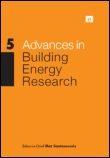
Advances in Building Energy Research
Pioneering Sustainable Practices in the Construction SectorAdvances in Building Energy Research is a pivotal journal dedicated to the scholarly exploration of energy efficiency and sustainable practices within the building and construction sector. Published by Taylor & Francis Ltd from the United Kingdom, this journal provides a rich platform for researchers, industry professionals, and students interested in the latest advancements and methodologies that drive energy conservation in architecture and engineering. With an impressive 2023 Scopus ranking of #64 out of 223 in the Building and Construction category and a notable Q2 category quartile, the journal occupies a significant position in its field, emphasizing high-quality, peer-reviewed research that meets the needs of a global audience. Though it operates under a subscription model, its contributions are invaluable for advancing knowledge that addresses the urgent challenges of energy consumption and sustainability in built environments. Spanning research published from 2007 to 2024, this journal continues to be an essential resource for those seeking innovative solutions and insights into building energy performance.